The Skyscraper Museum is devoted to the study of high-rise building, past, present, and future. The Museum explores tall buildings as objects of design, products of technology, sites of construction, investments in real estate, and places of work and residence. This site will look better in a browser that supports web standards, but it is accessible to any browser or Internet device.
14 WALL STREET (ENCOMPASSING 14-20 WALL STREET)
These images highlight the successive buildings that occupied the northwest corner of Wall and Nassau streets.
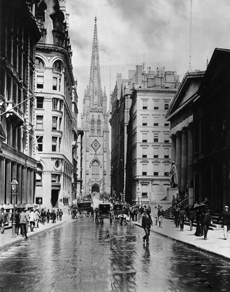
Reproduced from digital files, Library of Congress.
The 7-story office building, known as the Union Building, occupied the corner site from 1879 to 1896, when it was replaced by the slender 20-story Gillender Building, which became Wall Street's tallest tower when it was completed in 1897.
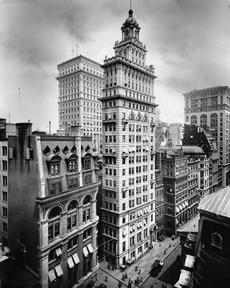
Reproduced from digital files, Library of Congress.
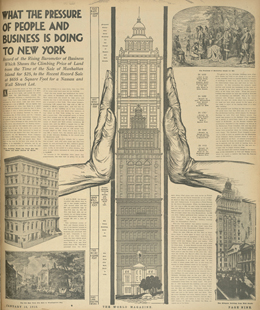
Reproduced from digital file, American Newspaper Repository, Duke University Libraries.
A reproduced page from the popular newspaper The World for Sunday, January 16, 1910, describes "the romance of real estate" that drove land prices on Wall Street, as well as new buildings, to dramatic heights. The paper noted that the value of land had increased from $56,000 in 1850 to $1.2 million in 1910.
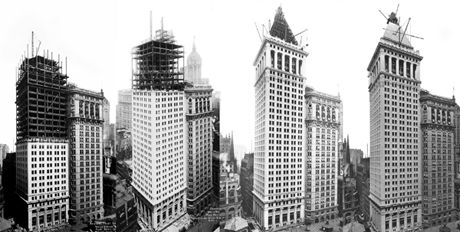
Collection of The Skyscraper Museum.
A series of photographs charts construction progress on the Bankers Trust tower from May to August 1911. The steel frame is shown rising in the first photograph and near completion in the last, with the stone pyramid approaching its full height of 538 feet.
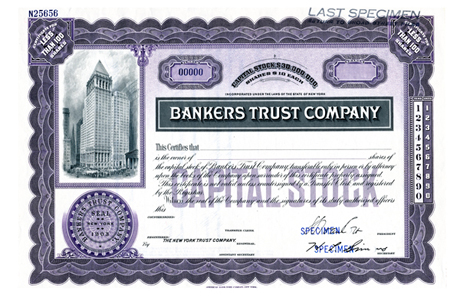
Reproduced from the original certificate in the collection of Mark Tomasko.
The specimen stock certificate for the Bankers Trust Company features a fine engraved image of the "Tower of Strength," seen after the addition of its annex building, designed by architects Shreve, Lamb & Harmon and completed in 1933.
